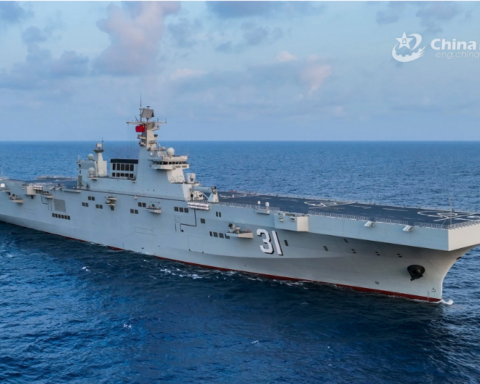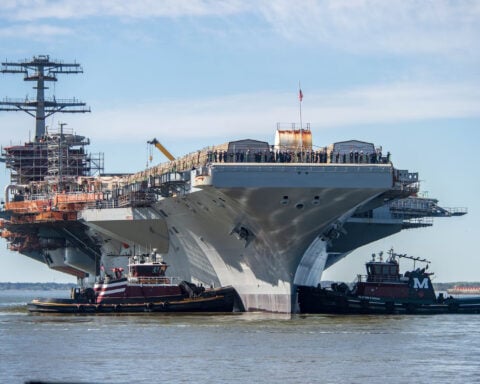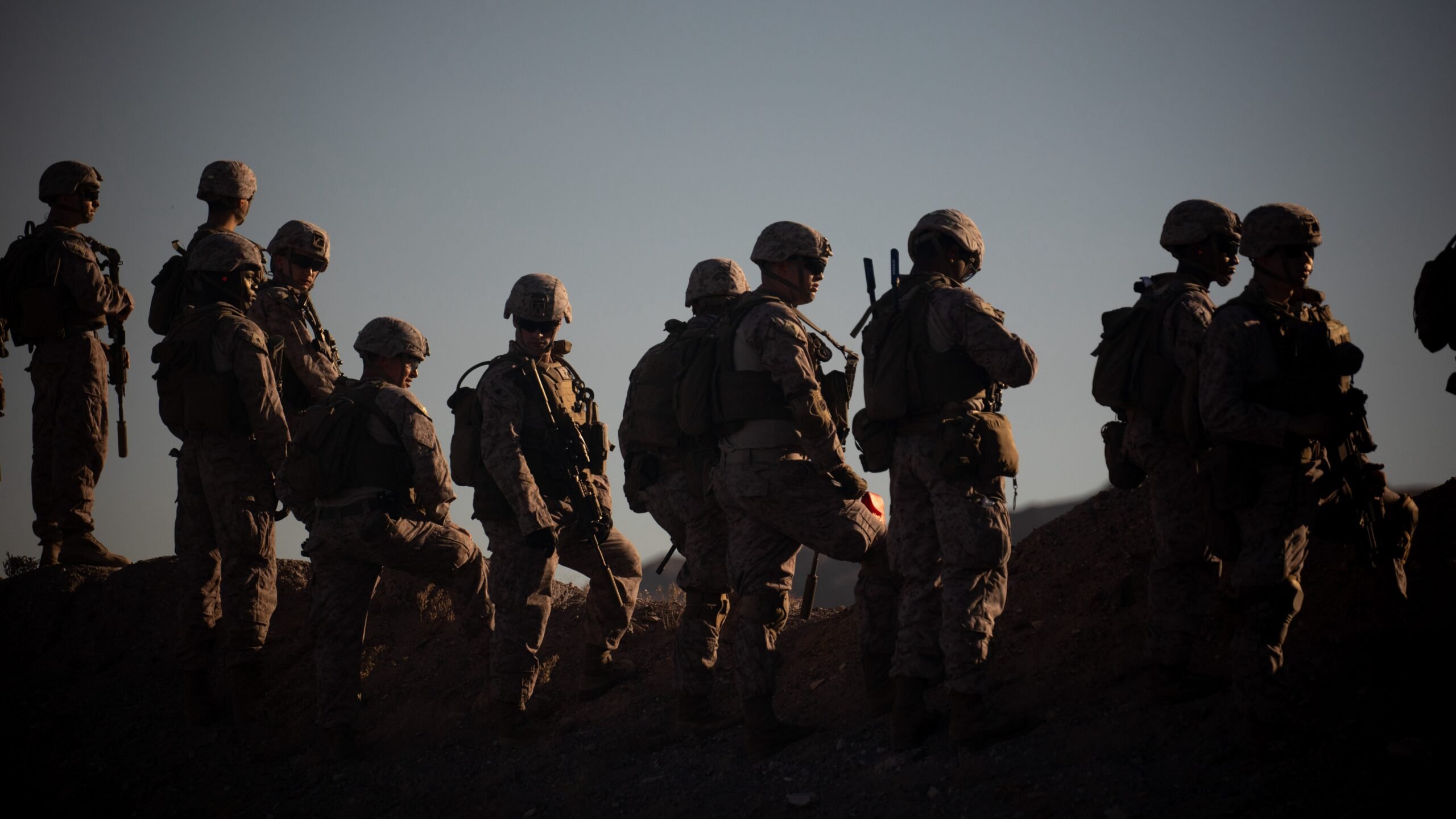
The Marine Corps on Wednesday released an update about its ambitious plans to modernize how it trains and educates into warfighters who are equipped for the multi-domain fight against peer adversaries.
The Training and Education Annual Report, or TEAR, is the annual review of the modernization strategy as part of its ongoing Force Design and modernization efforts.
“We continue to deliver on our promise to Congress, the Joint Force, our allies and partners, and our Marines to ensure we are postured, manned, trained and equipped for a peer fight while ensuring we remain ready for any crisis,” commandant, Gen. Eric Smith, said in a news release announcing the 14-page TEAR update.
The update directed 37 separate Force Design-related actions from new policies, goals and standards to reshape Marines’ individual training and education and revamp units’ collective training. The efforts are codified under TECOM’s Project Triumph, Project Trident or Project Tripoli and focus on positioning Marines and operational forces to fight adversaries and counter threats in a peer-level, contested multi-domain conflict.
Project Triumph is shifting Marines’ training and education away from lectures and into a digital learning model that fosters more critical thinking and cognitively agile warfighters, according to the Marines. Project Trident is equipping Marines with more lethality and Project Tripoli is standardizing and revamping units’ through expanded live, virtual and constructive training environments, and digital battle spaces that combine real, virtual and computer-generated forces.
Smith credited the work of Training and Education Command commander Lt. Gen. Kevin Iiams and his team “who keep pushing us forward.”
In the update, TECOM acknowledges that “time is a critical factor. We do not have the luxury to wait for the final answers on warfighting capabilities and concepts to be fully fielded or formally established before we act… As we think critically, plan rapidly and act decisively, we must maintain a level of risk-tolerance that enables us to adjust fire and re-attack when necessary as we continue to learn.”
“We’ve got a peer-level adversary who’s driving the plot,” Iiams said in an interview with USNI News. “We’ve got advancing technology out there. We’ve got a resource-constrained future, so for us to deliver, TECOM must be lean, agile and focused on lethality.”
Iiams called the latest update both “a report card” and “a flashlight (on) the vision to where we want to take the Marine Corps” and guided by feedback from Fleet Marine Forces over the past year as TECOM progressed on the initial 37 directed actions and 16 items for further research.
Another goal, said Iiams, is for the Marine Corps to change its decades-old resource models “so we can move faster and deliver sooner for our Marines.”
The update identifies a Training and Education Resource Management System that would allow TECOM to better manage all training systems “to prioritize those resources and move them into production faster than we ever had before,” he said, with the intent to deliver those training systems parallel to Combat Development and Integration’s delivery of new training kits to Marines. He’s also looking at acquisition reform to deliver “training-as-a-service” that enables the service to buy next-generation concepts and capabilities from vendors.
The TECOM update also identifies and addresses outdated or missing doctrine. “Right now, we are looking at 27 different pieces of doctrine that needed to be written or consolidated across the enterprise,” Iiams said. “In some cases, we found there were some gaps.” Among the recent doctrinal publications released is MCDP 8-10, Information in Marine Corps Operations, a companion to MCDP 8, Information, which was issued in 2022. About 30 percent have been completed so far and TECOM remains on track with the rest, officials said.
Among warfighting areas that lack specific doctrine, Iiams said, is an amphibious defense against peer-level adversaries. “What does an amphibious defense look like? What does a counter-landing doctrine look like? It’s completely in our lane,” said Iiams, who will hand over TECOM command when he retires later this summer. TECOM, with guidance from the assistant commandant Gen. Christopher Mahoney, in February held an initial conference “on how we can develop this very key piece of doctrine as we look to the future.”
Focus on the Force
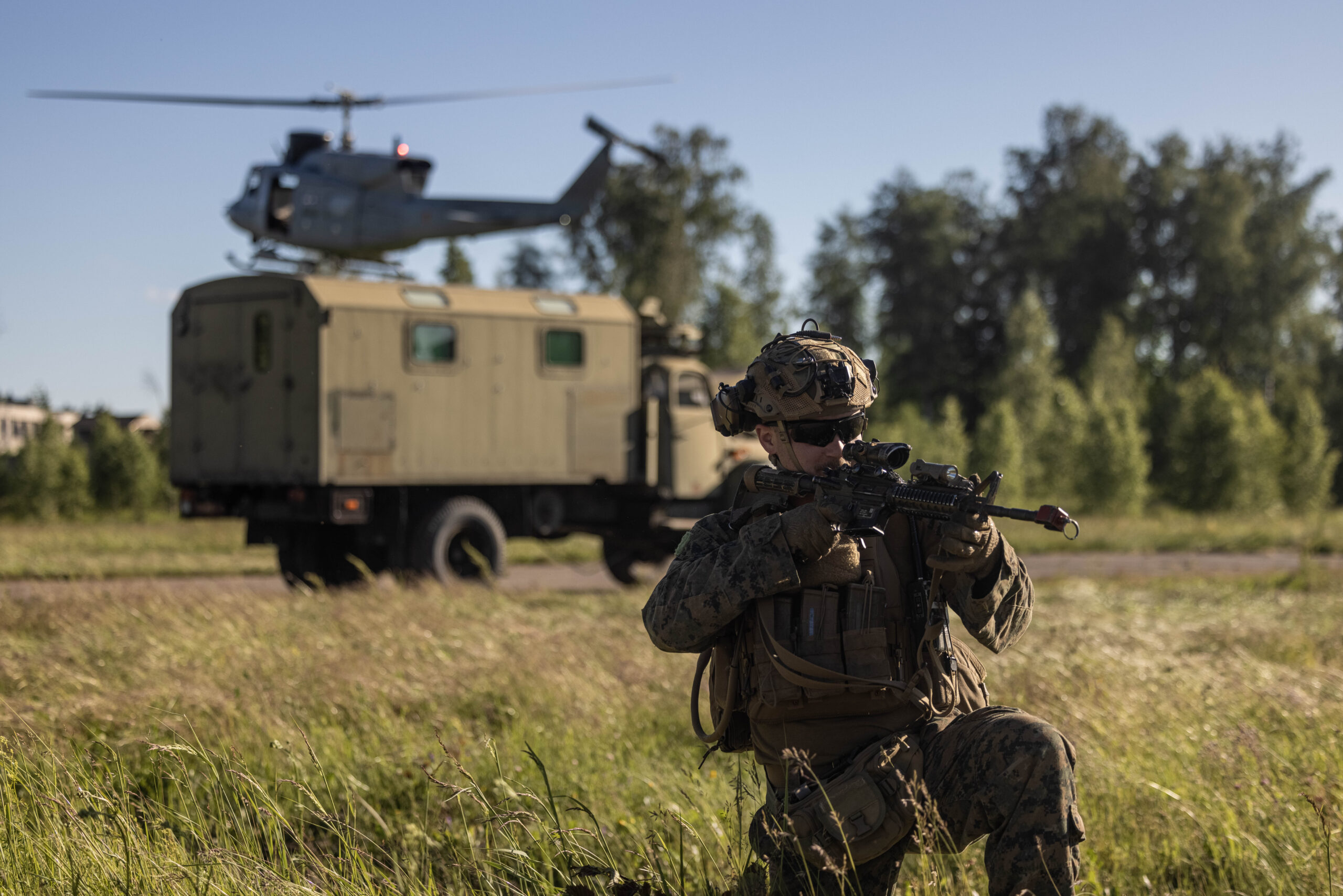
While TECOM is focused on building and sustaining Marines’ warfighting lethality, TECOM’s effort “is really going to be for naught if we don’t have the Marines who are actually trained to deploy with all of this stuff,” Iiams said. So its efforts through Project Triumph are tying into the recruiting and retention goals of the Marine Corps’ Talent Management 2030 strategy, led by Manpower and Reserve Affairs.
Initiatives include reducing time Marines wait to begin training. “There’s nothing worse for a Marine who’s signed on his or her young life to be a Marine and have them feel that that it’s being squandered waiting for a school or specific travel,” Iiams said. “So we are looking at ways to be able to reduce this and get them to the Fleet faster.”
Project Triumph is reshaping training and education.
“We’re not training Marines…what to think but how to think,” said Col. Karl Arbogast, director of the policy and standards division. TECOM also is moving to professionalize instructors “up a notch, so they are able to tailor content and deliver to the specific student to ensure maximum comprehension and retention.”
Under Triumph, TECOM officials have been focused on three areas: Codifying the outcomes-based learning scheme and updating training and education documents, manuals and policies; instructor development; and modern technologies and networks. Among the ongoing work is a major update to the Corps’ foundational order for training and education, MCO 1553.1, which was issued in 1991.
Instructor development is “the center of gravity” for Triumph, Arbogast said. “Our instructors must be highly-skilled coaches, mentors, exercise designers, curriculum developers and leaders at all levels.” TECOM created the Marine Corps Center for Learning and Faculty Development and established a baseline for instructor training through a new course, Facilitating Learning Experience, or FLEX, that last year began to replace the Train the Trainer Schools (T3S). “We are teaching this on both coasts,” he said, adding “it now ensures that all of our school formal instructors have a common, professional capability to instruct. It’s literally a fundamental shift from our ‘sage on a stage’ to an instructor that serves more as a ‘guide on the side.’”
TECOM also created a new course on curriculum development for instructors and is developing two courses – Assessing the Learning Experience (ALEX) and Enabling the Learning Experience (ELEX) – that will help instructors teach and run their classes, Arbogast said.
The Marine Corps is using accredited tools to standardize their training “and we want to make a professional, certified instructor,” said Iiams, who noted the recent establishment of the 0961 Exception Military Occupational Specialty, or EMOS, for tracking faculty advisors at the Corps’ Staff Noncommissioned Officer Academies.
Technological improvements planned and underway include modernizing classrooms and updating MarineNet “and making MarineNet better to facilitate both formal and self-guided learning,” Arbogast said. TECOM also is updating MCTIMS, the Marine Corps Training Information Management System, and M-SHARP, Marine-Sierra Hotel Aviation Readiness Program, he added.
TECOM, in late May, formally dedicated the Neller Center for Wargaming and Analysis at Quantico, named for the former commandant, retired Gen. Robert Neller. The new facility sits next to Marine Corps University, and Iiams said it will build on those relationships and ensure TECOM’s efforts in wargaming match that of the university’s curricula and programs of instruction as well as the nearby Marine Corps Warfighting Laboratory’s wargaming. University students “are going to be well-versed in wargaming as they get out to the fleet. We’re going to use it in all of tactical decision games, so Marines are going to see it time and time again and will start to get even better across the Marine Corps.”
Officials on May 10 broke ground on a new MAGTF Warfighting Center at Twentynine Palms that will be the digital twin to the Neller Center, officials said.
Building on Lethality
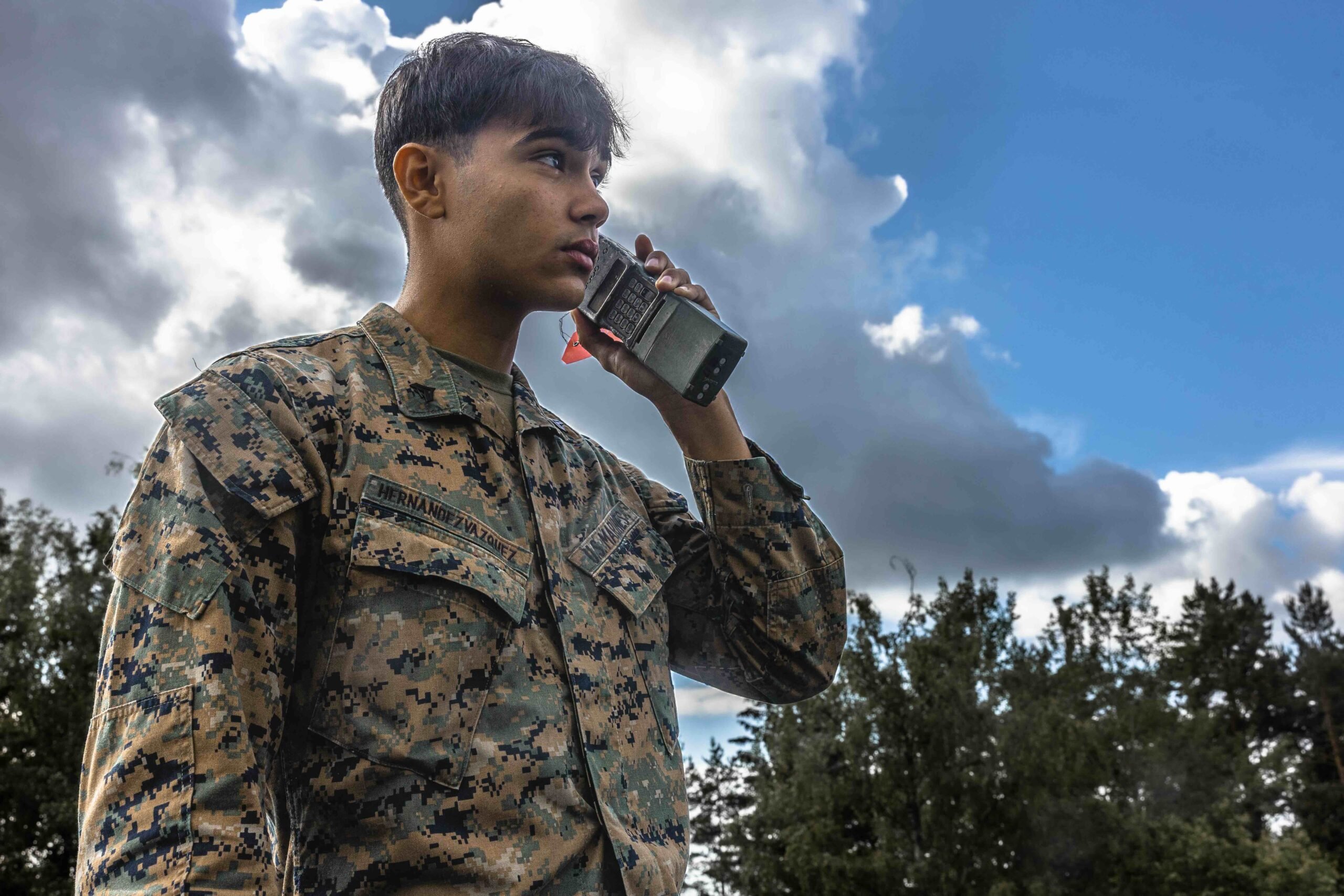
Project Trident is focused on building and strengthening Marines and units’ capabilities to build and close kill webs, through the use of multiple, integrated command-and-control nodes, sensors and shooters across all warfighting domains.
“It’s all about rapidly processing intel, assessing the right sensors to get target-quality tracks, finding the right weapon to target match, and accurately delivering the right fires to achieve the right effects,” said Col. Joe Farley, TECOM assistant chief of staff, G5.
That capability is key, officials say, to the Marine Corps’ contribution to the naval joint and combined force. “By necessity, we’re driving our evolution from a force optimized for air-ground combat and executing lineal kill chains to one capable of enabling complex kill webs,” Farley said. “And that’s whether our role is controller, sensor, shooter, or all the above and across all domains.”
That capability is critical in a conflict, especially in the distributed maritime environments of the Indo-Pacific, where the Marine Corps has established stand-in forces, or SIF, “as deterrents in competition and as combat multipliers in crisis and conflict,” he said. “A central idea of the SIF… is that of persistent distributed array of C2 nodes, sensors and shooters, including kinetic and non-kinetic fires manned by well-trained Marines and ready to be employed by the joint force.”
“Through exercise and experimentation, we have validated concepts, we’ve improved our C2 integration and closed critical gaps and data interfaces to enable targeting and fires,” he added, noting iterative exercises, including Project Convergence, Steel Knight and Northern Edge and Guardian Shield highlighting gaps in advanced training in individual and collective skills in kill webs.
TECOM also is exploring a littoral targeting fires course it provided 5th Marines and the 15th MEU, Farley said. While geared to individual training, staffs are interested in building skills, so TECOM is looking at building it into collective, not just individual training, he said, “and how does that get better integrated” into the joint training environment or the predeployment training pipeline.
Marines’ success in executing kill webs has been dependent on their ad-hoc experiences and initiative, Farley noted, but recent years’ exercises and experiments have built a growing cadre of experts that officials hope will become a deep bench of expertise.
TECOM is working on revamping individual and collective advanced training, reviewing courseware and creating new courses and training events, and working with the Joint Staff (J6 Fires), Navy fleet staffs and Maritime Working Group, including those training carrier strike and tactical groups, Expeditionary Warfare Training Groups and Naval Aviation Warfighting Development Center.
Maritime integration is key to Trident. “One thing we found is the Marine Corps and Navy no longer really speak the same language,” Farley said. “If you ask most Marine officers to explain (the Navy’s) composite warfare command, they couldn’t do it. The same goes for Navy officers to understand how the Marine Corps conducts fire support. Historically, the Navy hasn’t had to coordinate service fires for the Marines. Likewise, on its five-inch guns, Marines haven’t been trained to control or control naval surface fires like TLAM, which the SIF needs to do. In Trident, we’re in lock-step with the Navy to rectify this.”
TECOM “is focusing on where are our integration points with the Navy,” he added.
A sore spot, though, remains gaps in amphibious shipping and underfunded ship sustainment.
“Part of what makes this hard is the resource allocations that have been outlaid… from training and sustainment of certain ships,” Iiams said. “The Marine Corps has been fighting to make sure we have the 31 amphibious ships that we need to be able to do amphibious operations and train as we move to the future.”
“Recapitalizing sustainment to the amphibious side of the house so we can train and get all of our deck quals will take a couple of years to make sure we’ve got everything on track,” he said. “We are starting to close the gap,” he added, “but we need the Navy and the Marine Corps to remain focused and keep pushing with Congress for all of the funds that are necessary to sustain that 31-ship amphib fleet.”
Meanwhile, the service has had to manage training and scheduled deployments amid uncertainty in ships’ availability at sea, including the recently split deployment of the 15th Marine Expeditionary Unit scheduled with the USS Boxer Amphibious Ready Group. The big-deck amphibious assault ship USS Boxer (LHD-4) has been stuck in San Diego undergoing rudder repair, which followed previous engineering issues that sidelined the ship as the rest of the ready group deployed with part of the 15th MEU.
Iiams said the Marines have used ships, when available, for training opportunities, including those that deployed stateside to support fleet week events. Marines “are avid opportunists,” he noted, adding ships have provided at-sea training while en route for deck landing qualifications. “So we never give up… we look for opportunities to be able to train with each other, even when there are training fallouts due to maintenance, weather or something else.”
Tapping Tech for Training

Modernized networks are the backbone to Project Tripoli, and one of six priority areas to provide the high-tech, live, virtual and constructive training environment that service officials envision at each of the Marine Corps’ major installations.
“The network is being deployed as we speak,” Joseph Lomangino, the Project Tripoli team lead, said of MTEN, the Marine Training Enterprise Network. That network is being used in conjunction with the Naval Training Enterprise Network and its digital radio management system, “which allows for us to replicate radios without actually using the physical radio itself.”
As fielding and deployment continues, the new Marine Corps Tactical Instrumentation System “has been very successful so far,” Lomangino said. The warfighter, weapon and vehicle-borne MCTIS is replacing an older force-on-force capability on its decades-old Instrumented Tactical Engagement Simulation Systems II platform, or I-TESS.
“The system proved well. It identified shortfalls… which allowed people to close training gaps,” he said, adding that its integration with virtual and constructive training “is actually creating that battlefield of the future… the combined-arms training range of the future.”
Exercise controllers also get real-time, after-action details during the force-on-force scenarios, which in turn “increase the rate of learning on the exercise forces that are in the field,” Iiams said.
Six other new “live” new systems include electronic warfare spectrum management, EW emitters and frequency management tools, and work continues with aviation to put synthetic targets onto live platforms, Lomangino said,“ so people inside those live platforms can prosecute those targets, can look at the kill web, can identify kill chains and be able to defend and practice their procedures.”
TECOM also is deploying 18 different virtual simulations, including spectrum data tools, and also constructive systems being installed at six locations to support all three active-duty Marine expeditionary forces and at Quantico, Va., to support the Marine Air Ground Staff Training Program. TECOM also is working on four research and development projects under Tripoli in concert with the Joint Staff, J-7, he said: Joint training tool, after-action review tool, contested logistics tool, and artificial intelligence for adversary forces.
At Quantico, TECOM has established the TECOM Integration Center, or TIC, where its engineers are building the training systems. “We can actually get ahead of the power curve and utilize these people to do the integration… as opposed to us pushing this out” to industry, Lomangino said. “We can build in-house,” and save money.
Pushing Training Closer to the Fight
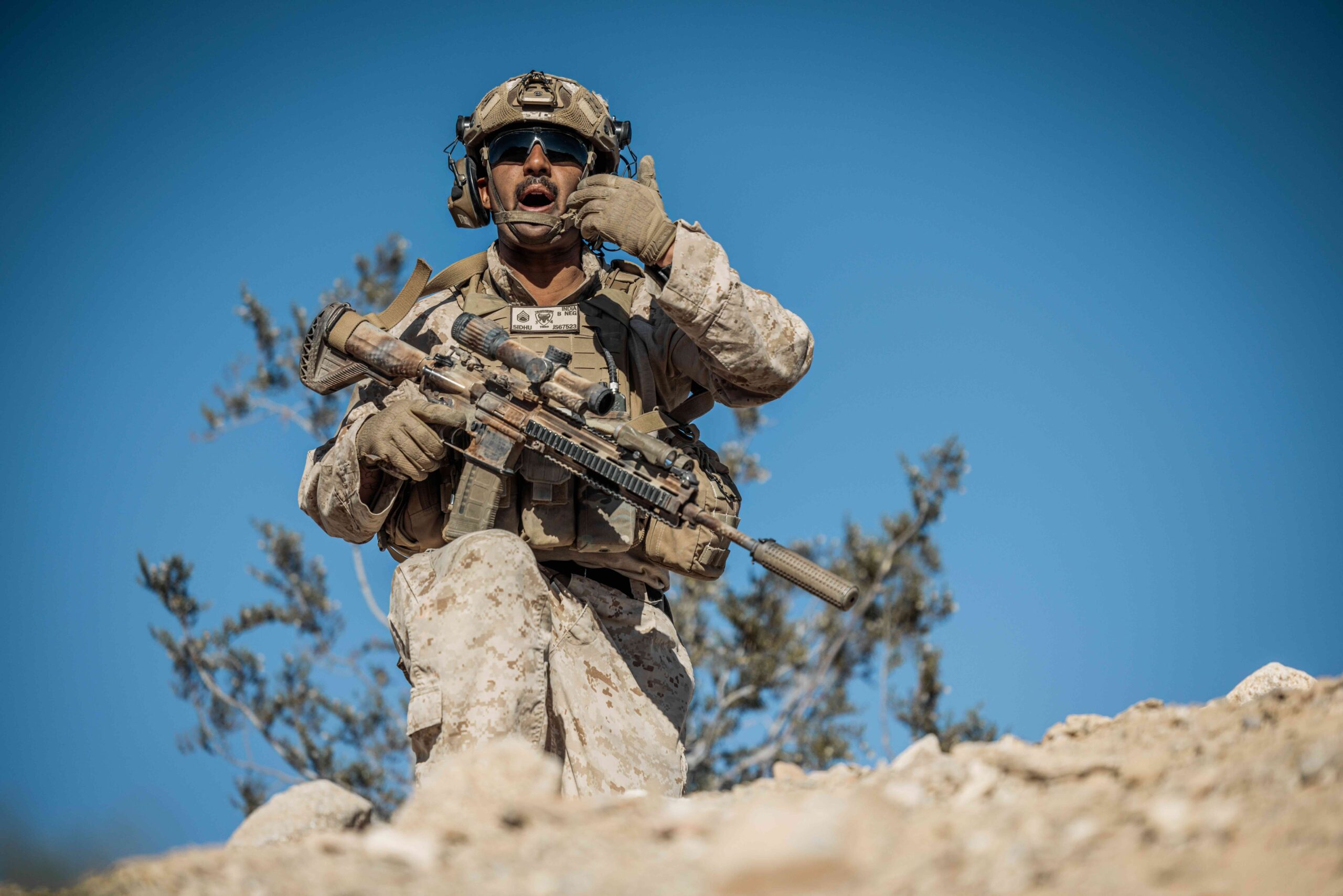
The overarching idea of Tripoli is to enable units to train more realistically, and at higher levels and in multiple domains, before participating in service-level training and certification exercises. With the network and LVC systems, “we can truly do global distributed training,” Lomangino said.
TECOM is looking at more opportunities to combine exercises, like I Marine Expeditionary Force’s Steel Knight and Dawn Blitz exercises, Iiams said, “and have them be building blocks into the SLTE, so that nobody is a training tool for anybody else, and we can synergize all of these exercises for one to build on another.”
Farley noted the Marine Air-Ground Task Force Training Center at Twentynine Palms, Calif., had supported Japan-based III MEF last winter for a Stand-in Force exercise with 4th Marines at Camp Fuji with the Japanese Ground Self-Defense Force. “That was highly successful,” he said.
And it’s critical for that future conflict that U.S. officials predict may flare up, including against peer threats posed by China in the Indo-Pacific.
“For our Stand-In Force, we want them to get the same number of sets and reps as any other force. But pulling them out of the First Island chain and leaving a gap in our deterrence force that’s out there is untenable. So how do you train them in place?” Iiams said. “You train them with Project Tripoli, and you train them with these Fleet Support Programs that we’re going to have from MAGTFTC that go out to the units in the field, in place, in the Philippines and Okinawa, and across that First and Second island chain to provide the training in place, in stride and on demand.”
TECOM integrated some of Tripoli’s capabilities into recent Balikatan exercises and is working with the parallel training modernization effort by U.S. Pacific Command, U.S. Pacific Fleet and Marine Forces Pacific. “We’d like to have one holistic training capability in the Indo-Pacific that is supported by the Marine Corps,” he said.



